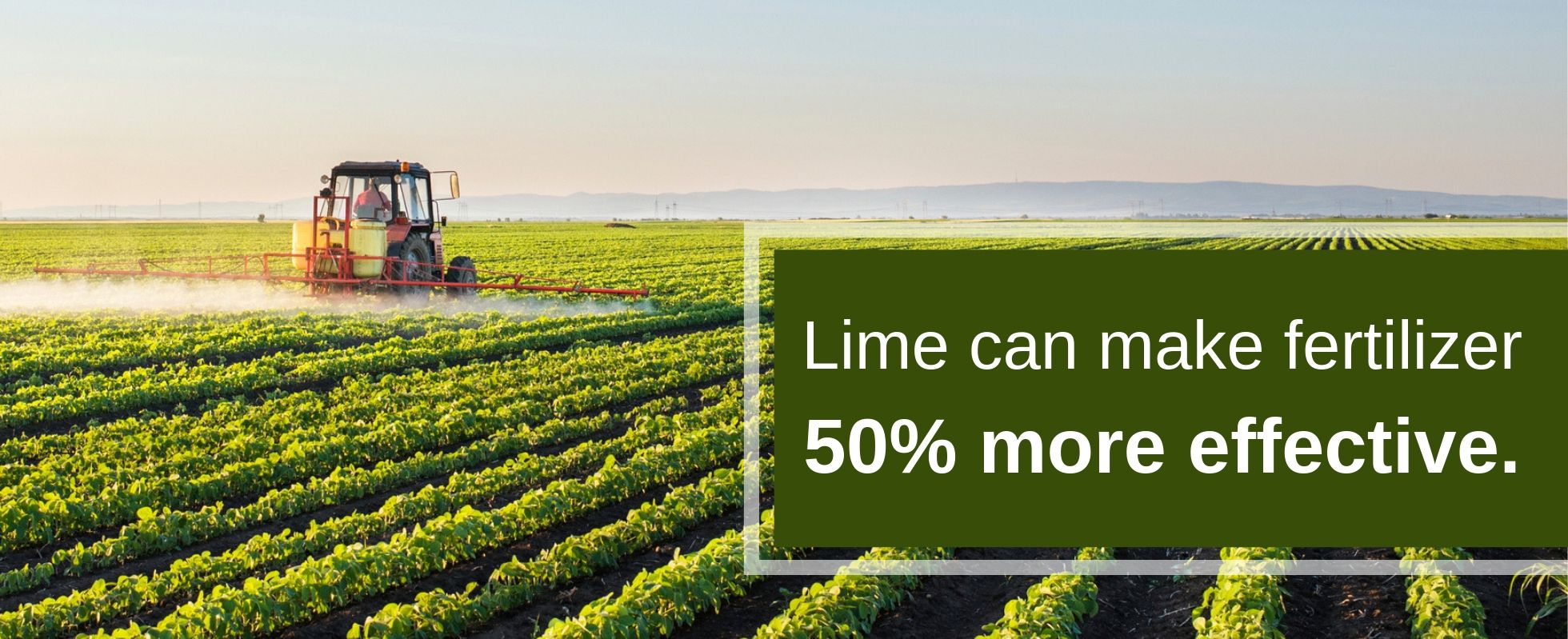The Dollars and Sense of Lime

Ag lime is the cornerstone of all good fertility programs. Regulating your soil’s pH with a lime material is one of the highest impact and lowest cost practices that you can do to manage your hay and crop land. Using the best varieties and cultural practices alone will not allow the crop to reach its full potential unless soil fertility is properly managed. Aglime and fertilizer work hand in hand to support a strong fertility program. Research has shown that the N, P and K are more available to plants as soil pH increases. Much research has been done to find an optimum pH range for the crop being grown. Through this research, it has been determined that high levels of acidic soil can reduce crop yields, reduce nutrient availability, and affect the crop herbicide performance. Soil can become acidic through the normal practice of adding sulfur or nitrogen fertilizers.
Most of the studies have concentrated on soil pH in the production of alfalfa. Recent studies have observed the negative effect low pH will have on corn and soybean yields. Studies indicate corn is not responsive to lime application unless the pH drops below 5.0.
Soybeans on the other hand have shown significant yield loss at pH below 6.3. In general, yield responses ranged from 25 to 40% as the pH was brought to the optimum range. Early studies from Agricultural Research Stations across Wisconsin have shown that a soil pH of 6.3 is required for optiumum yields of soybeans, somewhere between that for corn and alfalfa. in general, it is recommended to maintain soil pH for the most sensitive crop in the rotation.
The most economical tool available to the producer is the soil test. A soil test will determine the degree of soil acidity and the amount of liming material needed to neutralize that acidity. Depending on soil type and how acid the soil is this can vary anywhere from as little as 0 or 1-2 tons/acre up to 8-10 tons/acre of 60-69 grade ag lime. Not all limestone is the same. Most lime is sold as 60-69 or a 50-59 lime. Lime can vary on chemical purity and speed of reaction. Chemical purity is determined by the material’s calcium carbonate equivalent (the neutralizing effect compared to pure calcium carbonate). The speed of reaction is determined by the fineness of the material (based on the percent of materials passing through a 20-, 60-, and 100- mesh sieve). Solubility of the limestone increases as it is ground finer. Therefore, a 50-59 lime and a 60-69 lime with the same CCE (chemical purity), will only vary on the speed of reaction with the soil. Both will have the same net neutralizing effect, but the 50-59 will take a little longer to react with soil particles.
Fall is a good time to be planning for the next cropping season by getting the lime applied. Lime takes three to six months to react with soil particles so a fall application can give you a jumpstart to the next cropping season. Custom haulers have a bigger window of opportunity for application.




